Landscape Gardeners Manor House
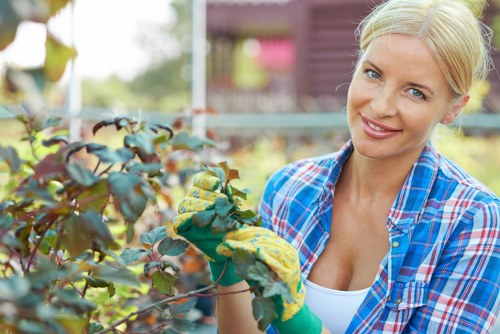
Landscape gardeners play a crucial role in the maintenance and transformation of manor house gardens. These historic estates often feature expansive grounds that require meticulous care and expert design to preserve their beauty and heritage.
Manor houses, with their rich history and architectural significance, demand special attention when it comes to landscaping. The gardens not only enhance the aesthetic appeal of the property but also reflect the character and legacy of the manor house itself.
Professional landscape gardeners bring a blend of creativity and technical knowledge, ensuring that each element of the garden harmonizes with the manor house's style and the surrounding environment.
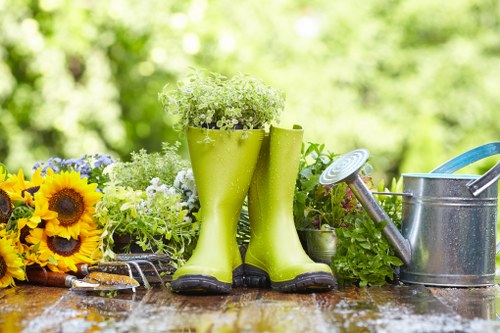
History of Manor House Gardens
The tradition of gardening at manor houses dates back centuries. Initially, these gardens were designed to display wealth and power, featuring elaborate layouts, intricate pathways, and a variety of plant species.
Over time, the focus shifted towards creating spaces that offer tranquility and beauty. Today, manor house gardens often incorporate both formal and informal elements, blending structured designs with natural landscapes.
Understanding the historical context of these gardens is essential for modern landscape gardeners. It allows them to preserve traditional features while integrating contemporary landscaping techniques.
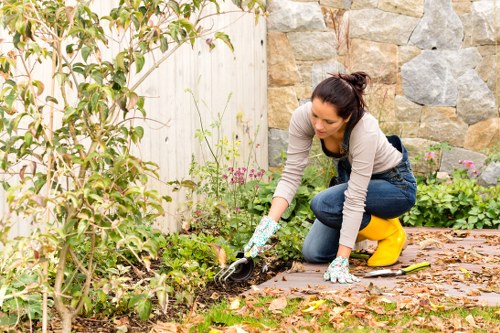
The Importance of Landscaping for Manor Houses
Landscaping is more than just planting flowers and maintaining lawns. For manor houses, it's about creating a cohesive environment that enhances the property's overall appeal.
Well-designed gardens can increase the value of a manor house, making it a more attractive residence or a sought-after venue for events. They also provide a serene retreat for homeowners and visitors alike.
Moreover, sustainable landscaping practices help preserve the natural ecosystem surrounding the manor house, promoting biodiversity and environmental health.
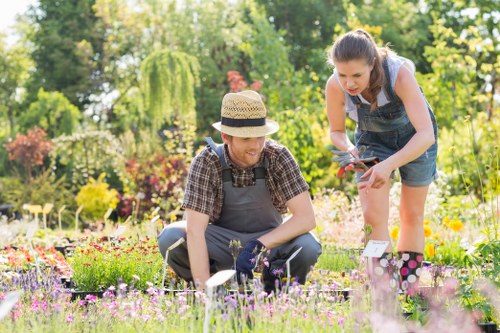
Services Offered by Landscape Gardeners
Landscape gardeners offer a wide range of services tailored to the unique needs of manor houses. These include:
- Garden Design: Crafting layouts that complement the manor house's architecture.
- Plant Selection: Choosing species that thrive in the local climate and soil conditions.
- Maintenance: Regular upkeep to ensure the garden remains pristine.
- Hardscaping: Installing elements like patios, walkways, and water features.
- Restoration: Reviving historical garden features and structures.
Each service is performed with attention to detail, ensuring that the garden remains a beautiful and functional space year-round.
Collaborating with clients, landscape gardeners create personalized gardens that reflect the owner's tastes and the manor house's heritage.
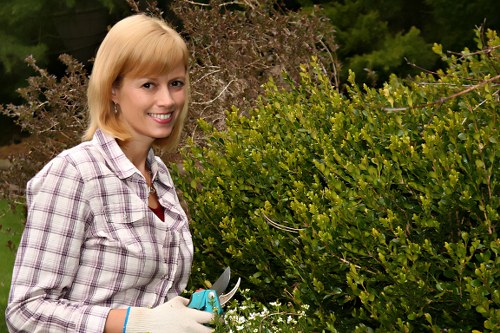
Design Principles for Manor House Gardens
Designing a garden for a manor house involves balancing historical elements with modern aesthetics. Key principles include:
- Symmetry and Balance: Creating visually pleasing arrangements that mirror the manor house's architecture.
- Layering: Using different plant heights and textures to add depth.
- Color Coordination: Selecting a color palette that complements the house and seasonal changes.
- Focal Points: Incorporating features like statues, fountains, or unique plant specimens to draw attention.
- Functionality: Designing spaces for relaxation, entertainment, and gardening activities.
These principles ensure that the garden not only looks stunning but also serves the practical needs of the manor house inhabitants.
Additionally, integrating sustainable practices like rain gardens and native plantings can enhance the garden's ecological footprint.
Choosing the Right Plants
Plant selection is a critical aspect of manor house garden design. The chosen plants should thrive in the local climate and soil while adding beauty and structure to the garden.
Seasonal variety is important to ensure that the garden remains attractive throughout the year. Incorporating a mix of perennials, annuals, shrubs, and trees can achieve this effect.
Furthermore, selecting native species helps in maintaining a sustainable garden, reducing the need for excessive watering and maintenance.
Maintenance Practices
Regular maintenance is essential to preserve the garden's beauty and health. This includes tasks like pruning, weeding, mulching, and fertilizing.
Landscape gardeners often develop tailored maintenance schedules to address the specific needs of the manor house garden, ensuring that each plant receives appropriate care.
Additionally, proactive maintenance helps in identifying and managing potential issues like pest infestations or plant diseases early on.
Sustainable Landscaping
Incorporating sustainable practices into manor house landscaping not only benefits the environment but also enhances the garden's resilience.
This includes using drought-resistant plants, implementing efficient irrigation systems, and promoting biodiversity by creating habitats for local wildlife.
Organic gardening techniques and the reduction of chemical usage also contribute to a healthier and more sustainable garden ecosystem.
Local Relevance: Nearby Areas to Manor House
Understanding the local context is vital for landscape gardeners working on manor house projects. The surrounding areas influence design choices and plant selections.
Here are some of the closest areas to consider:
- Elmwood Park: Known for its expansive green spaces and mature trees, Elmwood Park offers inspiration for creating shaded garden areas.
- Riverside Estate: Featuring a historical riverbank, Riverside Estate provides opportunities for water features and lush, moisture-loving plants.
- Sunnyvale Gardens: With its vibrant floral displays, Sunnyvale Gardens is ideal for incorporating colorful blooms and seasonal plantings.
- Oakridge Meadows: The rolling meadows of Oakridge offer a rustic backdrop suitable for integrating naturalistic garden elements.
- Maple Terrace: Maple Terrace's tree-lined avenues inspire the use of canopy trees and structured pathways in manor house gardens.
- Brookside Manor: Similar in architectural style, Brookside Manor provides a reference for maintaining historical garden features.
- Pine Hill: The pine-covered hills of Pine Hill are perfect for incorporating evergreen plants and creating year-round greenery.
- Willow Creek: Willow Creek's serene environment is ideal for designing peaceful retreat areas within the garden.
- Silver Lake: Proximity to Silver Lake allows for the inclusion of aquatic plants and reflective water bodies.
- Greenfield Park: Greenfield Park's diverse plant species inspire a rich biodiversity in manor house gardens.
- Lakeside Grove: The grove offers mature trees and shaded areas perfect for secluded garden sections.
- Rosewood: Known for its rose gardens, Rosewood influences the inclusion of flowering shrubs and ornamental plants.
- Stonebridge: Stonebridge's historic stone pathways guide the design of garden walkways and hardscape elements.
- Fern Hollow: Fern Hollow's lush, fern-filled areas inspire the use of shade-loving plants in manor house gardens.
- Cedar Bend: Cedar Bend's cedar trees provide a backdrop for creating natural fences and privacy screens.
Each of these areas offers unique features that landscape gardeners can draw upon to create harmonious and beautiful manor house gardens.
By understanding the local environment, gardeners ensure that the landscape complements both the manor house and its surroundings.
Enhancing the Manor House with Outdoor Features
Incorporating outdoor features can significantly enhance the appeal and functionality of manor house gardens. Popular additions include:
- Water Features: Fountains, ponds, and streams add a soothing element and attract wildlife.
- Outdoor Lighting: Strategically placed lights highlight garden features and provide safety for evening activities.
- Patios and Pergolas: These structures offer spaces for outdoor dining and gatherings.
- Sculptures and Art Installations: Artistic elements add character and serve as focal points within the garden.
- Pathways: Well-designed walkways guide visitors through the garden, enhancing the overall experience.
Each feature should be thoughtfully integrated to maintain the garden's aesthetic and functionality.
Collaborating with clients, landscape gardeners select and position these elements to align with the manor house's style and the garden's layout.
Seasonal Garden Planning
Effective garden planning considers the changing seasons to ensure year-round beauty and interest. Key aspects include:
- Spring: Planting bulbs and flowering plants to create vibrant displays as the weather warms.
- Summer: Maintaining lush greenery and managing water usage to keep the garden thriving.
- Autumn: Incorporating plants with striking fall colors and preparing the garden for winter.
- Winter: Protecting plants and utilizing evergreen species to maintain structure and color.
Seasonal planning allows gardens to adapt to climatic changes, ensuring they remain healthy and attractive throughout the year.
Landscape gardeners work with clients to develop plans that maximize the garden's potential during each season.
Eco-Friendly Practices
Sustainability is a growing focus in landscape gardening. Eco-friendly practices not only benefit the environment but also create a healthier garden.
Some practices include using organic fertilizers, implementing composting systems, and conserving water through efficient irrigation.
Additionally, selecting native plants reduces the need for artificial fertilizers and pesticides, promoting a balanced ecosystem.
Integration with Architecture
The garden should complement the manor house's architectural style. Whether it's a Victorian, Georgian, or modern manor, the landscape should reflect and enhance the property's character.
This integration involves selecting appropriate materials, plant species, and design elements that resonate with the architecture.
By aligning the garden with the manor house's design, landscape gardeners create a cohesive and harmonious environment.
Technology in Landscape Gardening
Advancements in technology have revolutionized landscape gardening for manor houses. Modern tools and software aid in design, planning, and maintenance.
3D modeling software allows gardeners to visualize garden layouts before implementation, ensuring that design elements align with the client's vision.
Smart irrigation systems optimize water usage, adapting to weather conditions and soil moisture levels to maintain healthy plant growth.
Client Collaboration
Successful landscape gardening involves close collaboration with clients. Understanding the client's preferences, lifestyle, and vision is essential to creating a personalized garden.
Regular consultations and updates ensure that the project stays aligned with the client's expectations and requirements.
Feedback and suggestions are encouraged, fostering a collaborative environment that leads to satisfactory outcomes.
Budget Management
Managing the budget is a critical aspect of landscape gardening for manor houses. Landscape gardeners work with clients to establish realistic budgets and allocate resources effectively.
Cost-effective solutions are sought without compromising on quality or design integrity. This includes prioritizing essential elements and phasing projects as needed.
Transparent communication about costs and potential expenses helps in maintaining trust and ensuring project feasibility.
Maintenance Contracts
Many landscape gardeners offer maintenance contracts to ensure the garden remains in optimal condition after the initial design and installation.
These contracts typically include regular upkeep services like trimming, weeding, fertilizing, and seasonal planting.
Long-term maintenance agreements provide clients with peace of mind, knowing that their garden will continue to thrive and look beautiful.
Conclusion
The role of landscape gardeners in manor house settings is indispensable. Their expertise ensures that these historic estates maintain their grandeur and natural beauty through thoughtful and sustainable landscaping.
From design and plant selection to maintenance and restoration, landscape gardeners contribute significantly to the preservation and enhancement of manor house gardens.
By blending tradition with innovation, they create gardens that are not only visually stunning but also functional and sustainable for future generations.
Frequently Asked Questions
1. What services do landscape gardeners provide for manor houses?
Landscape gardeners offer a wide range of services including garden design, plant selection, maintenance, hardscaping, and restoration of historical garden features. They tailor their services to meet the unique needs of each manor house.
2. How do landscape gardeners preserve the historical aspects of manor house gardens?
They study the garden's history and architectural style, preserving traditional elements while integrating modern landscaping techniques. This includes using period-appropriate plants and materials to maintain the garden's original character.
3. What are the benefits of hiring a professional landscape gardener for a manor house?
Professional landscape gardeners bring expertise in design, sustainability, and maintenance. They ensure the garden enhances the property's aesthetic and value while being environmentally friendly and easy to maintain.
4. Can landscape gardeners help with sustainable gardening practices?
Yes, they can implement eco-friendly practices such as using native plants, efficient irrigation systems, and organic fertilizers to create a sustainable and resilient garden ecosystem.
5. How do landscape gardeners plan for seasonal changes in manor house gardens?
They develop seasonal planting schedules and maintenance plans to ensure the garden remains attractive throughout the year. This includes selecting plants that bloom in different seasons and adjusting care routines to address seasonal challenges.